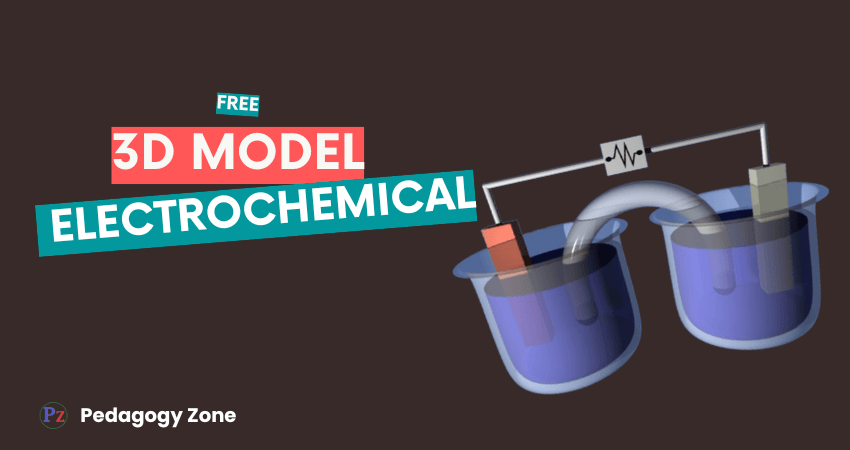Electrochemical simulations are a cornerstone of research in fields such as energy storage, fuel cells, and corrosion science. These simulations help scientists and engineers predict the behavior of electrochemical systems without the need for physical experiments, saving both time and resources. Traditionally, these simulations relied heavily on 2D models, which, while useful, often lacked the depth and accuracy needed to fully understand complex electrochemical reactions. Enter 3D modeling—a game-changer that offers a more comprehensive view. And the best part? Many of these 3D models are available for free, making high-quality simulations more accessible than ever before.

[sc_fs_faq html=”true” headline=”h2″ img=”” question=”What are Electrochemical Simulations?” img_alt=”” css_class=””] Electrochemical simulations are computer-based models that replicate the behavior of electrochemical systems. They are crucial in understanding how different materials and chemicals interact under various conditions. Industries like battery development, fuel cells, and corrosion prevention heavily rely on these simulations to optimize their products and predict performance. [/sc_fs_faq]
The Role of 3D Modeling in Electrochemical Simulations
3D modeling takes these simulations a step further by providing a more detailed, spatial understanding of electrochemical processes. Unlike 2D models, which only show a flat, two-dimensional representation, 3D models allow researchers to see interactions in a volumetric space, capturing details that could be missed otherwise. This shift from 2D to 3D has revolutionized the way simulations are conducted, making them more precise and insightful.
Challenges in Electrochemical Simulations Without 3D Models
Before the advent of 3D models, researchers faced several limitations. Traditional 2D models were often insufficient for capturing the full complexity of chemical reactions, leading to potential inaccuracies in predictions. For instance, understanding the behavior of a lithium-ion battery under stress is challenging when only looking at it from a flat, 2D perspective. The lack of depth and detail could result in miscalculations that impact research outcomes and product development.
Emergence of Free 3D Models
The advent of free 3D models has democratized access to high-quality simulations. With the rise of open-source platforms and community-driven projects, researchers no longer have to rely solely on expensive software or proprietary models. Free 3D models have become widely available, allowing anyone with a computer and the right software to dive into complex electrochemical simulations.
How Free 3D Models Are Created
Free 3D models are often created using software like Blender, FreeCAD, and OpenSCAD. These tools allow users to design, edit, and share models. Many of these tools are also open-source, meaning they are free to use and are continually improved by a community of developers. The models created can range from simple geometric shapes representing molecules to intricate, highly detailed representations of entire electrochemical cells.
Advantages of Using Free 3D Models
There are several benefits to using free 3D models in electrochemical simulations:
- Cost Efficiency: Without the need for expensive software licenses, researchers can allocate resources elsewhere.
- Enhanced Accuracy and Detail: 3D models provide a more accurate representation of complex systems, leading to better predictions and understanding.
- Collaboration and Sharing: Open-source platforms enable scientists to share their models, findings, and improvements, fostering a collaborative environment.
Popular Platforms for Free 3D Models in Electrochemical Simulations
Several platforms provide a rich repository of free 3D models. Some of the most popular include:
- GitHub: A go-to platform for developers and researchers to share 3D models and simulation scripts.
- Thingiverse: While primarily for 3D printing, it also hosts a variety of models useful for scientific research.
- FreeCAD: An open-source software with a library of 3D models suitable for electrochemical simulations.
Case Studies: Real-World Applications of Free 3D Models
In the battery industry, free 3D models have been used to simulate the behavior of lithium-ion batteries under different conditions. This has helped manufacturers improve battery life and safety. Similarly, in fuel cell development, 3D models have been crucial in optimizing the flow of gases and liquids, leading to more efficient energy conversion. In corrosion studies, these models help in visualizing how materials degrade over time, which is vital for industries like automotive and aerospace.
The Impact on Research and Development
The availability of free 3D models accelerates innovation by reducing barriers to entry. Researchers can conduct more experiments in less time, validate their hypotheses faster, and refine their designs without the hefty cost of proprietary software.
Integration with Other Technologies
Free 3D models are not just limited to electrochemical simulations; they integrate seamlessly with other technologies like AI and machine learning. For example, AI algorithms can analyze the data generated from 3D models to predict outcomes or suggest optimizations. Additionally, virtual reality (VR) can be used alongside 3D models to provide an immersive experience, allowing researchers to “walk through” their simulations.
Future Trends in Electrochemical Simulations with Free 3D Models
As technology advances, the quality and accessibility of free 3D models will only improve. We can expect more sophisticated models, better integration with other tools, and a more extensive community of users and contributors.
How to Get Started with Free 3D Models for Electrochemical Simulations
Getting started is easier than ever. Begin by downloading software like FreeCAD or Blender. Next, explore platforms like GitHub or Thingiverse to find models relevant to your research. Always ensure to read the license agreements for any model you use to respect intellectual property rights.
Common Misconceptions About Free 3D Models
One common misconception is that free models are inferior in quality. However, many free 3D models are created by experts and offer the same, if not better, quality than paid versions. Another myth is that they are difficult to use, but with the right tools and a bit of practice, anyone can utilize these models effectively.
| Read More Topics |
| Nano electrokinetic assisted paper electrochemical assay |
| Energy efficient heat pump electrical for pool |
| Energy management system in electrical vehicles |





